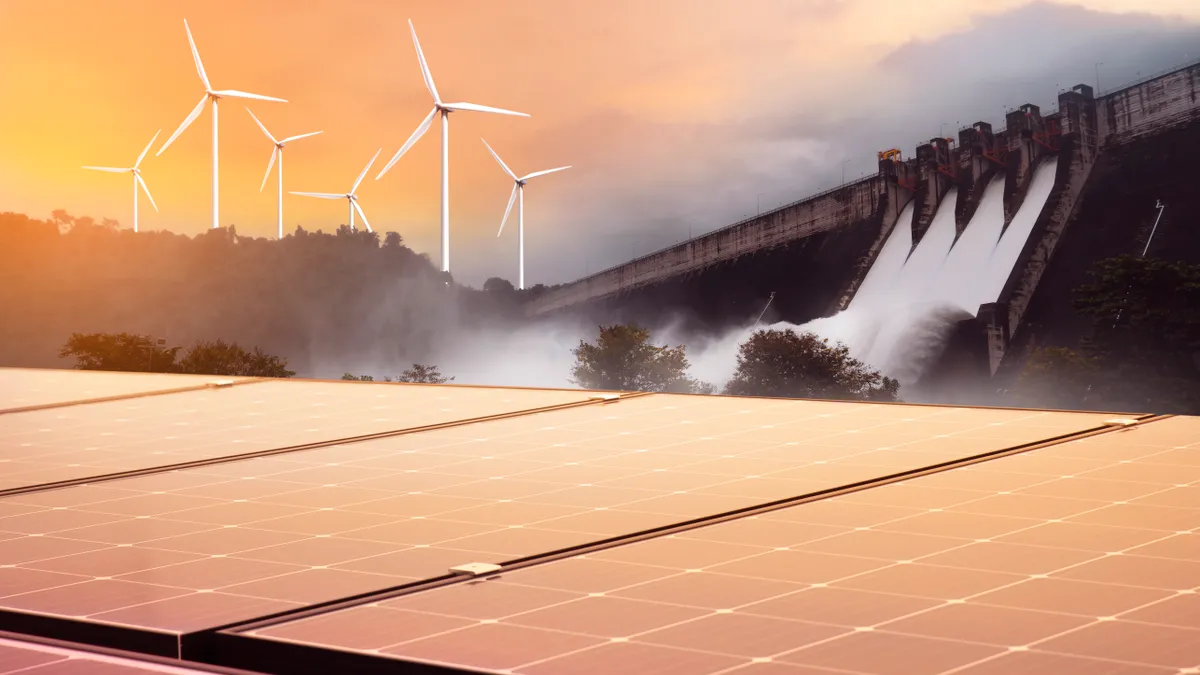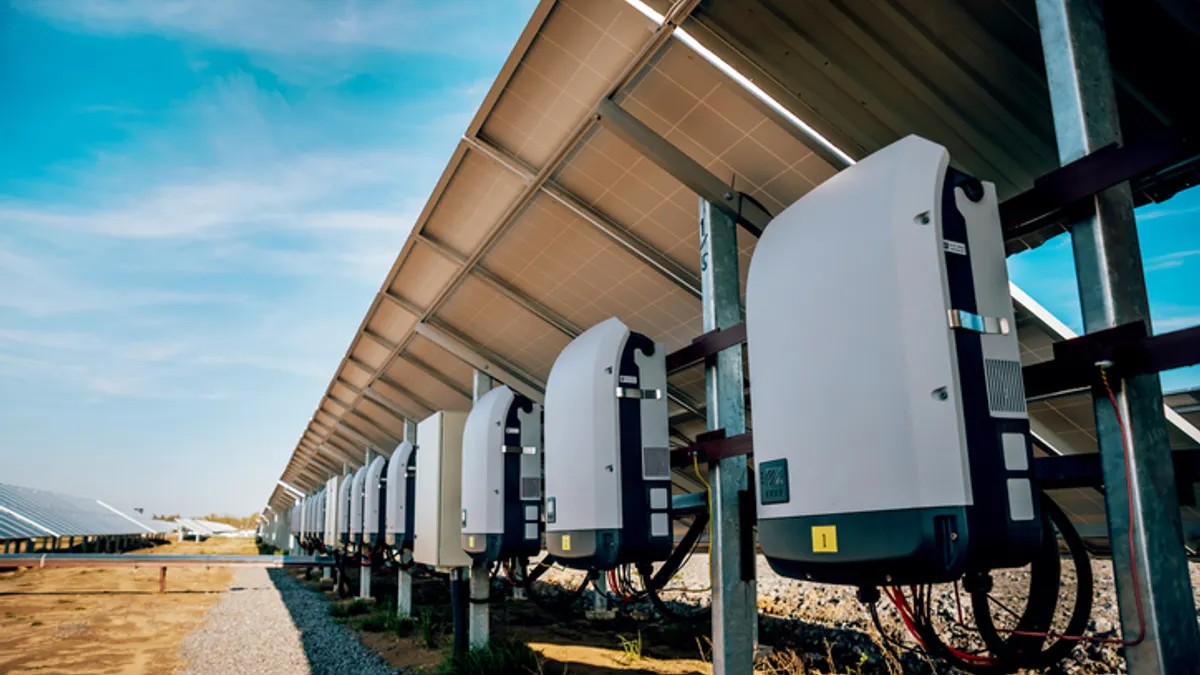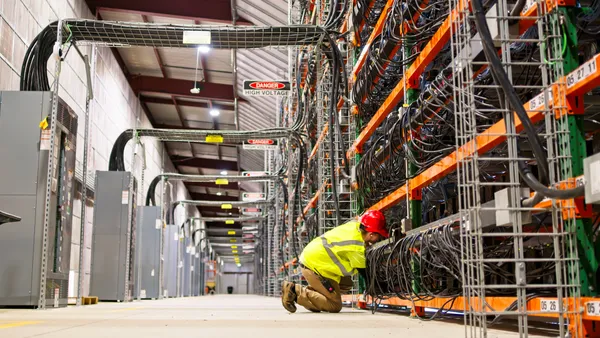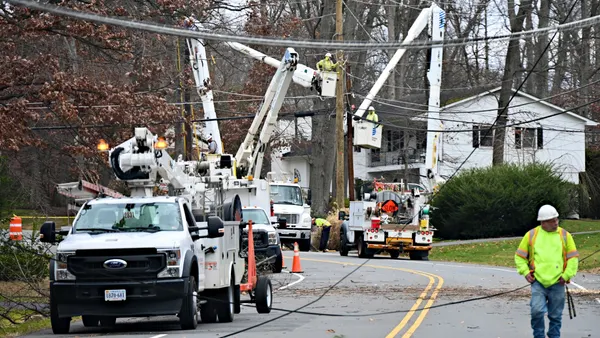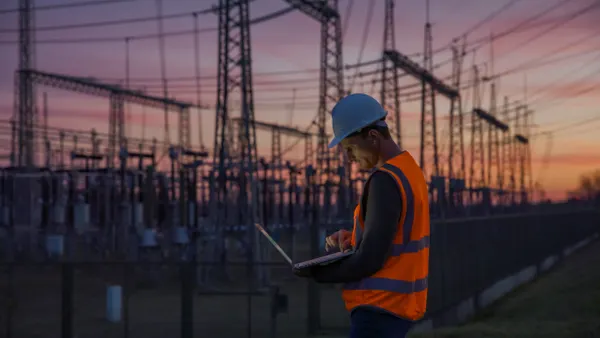Derek Stenclik is a founding partner of Telos Energy and Priya Sreedharan is a program director at GridLab.
In 1961, President John F. Kennedy set the nation’s sights on a seemingly impossible task: putting a man on the moon. This Moonshot goal was set before the technology to meet that goal was available. Within 10 years, with a mix of leadership, determination, and creativity, the United States succeeded in meeting this goal. Motivated by climate change action and spurred by declining clean energy costs, the power sector is faced with an equally ambitious task of transitioning the electricity grid to 100% clean. Several states across the U.S. have set clean goals within the next 30 years, but few have conducted the analysis that informs a path to reliably reach these goals.
Using the Public Service Company of New Mexico, or PNM, as a case study, research by GridLab and a consortium of experts examines different paths to reach this goal and illustrates how it can be achieved economically and reliably. However, as with the original Moonshot, achieving this goal requires taking action now. Here are some of the key lessons from our research.
Don’t lose focus of the necessary near-term actions
While our research focused on planning for a 100% clean electricity system, a core priority was to highlight least regrets strategies that could be adopted in the near term. Although there is hype about emerging technologies like hydrogen, our study showed that deploying large amounts of wind, solar, and battery storage is a low or no regrets pathway to a 90% clean grid. Deploying these resources does not preclude future options and forms the foundation of a clean portfolio in every path we evaluated.
In other words, there’s a clear argument to focus our efforts today on accelerating the deployment of known, cost-effective clean technologies, rather than determining the exact path to achieving 100% clean electricity. Clean resources will need to be installed at a scale and pace that far outweighs historical deployment rates. Policymakers, regulators, developers and communities should focus on removing the barriers to deployment.
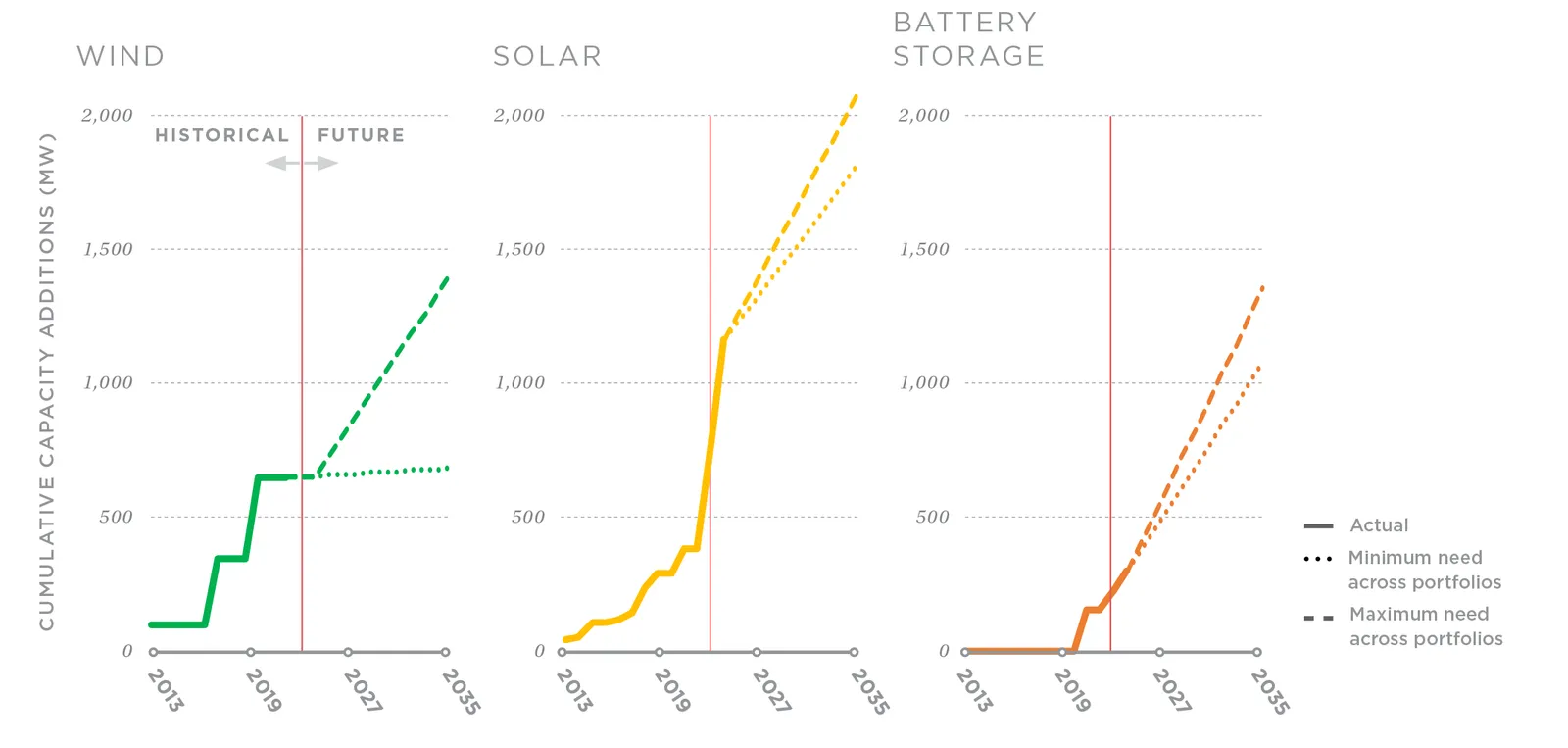
There are multiple ways to get through the “last mile” towards 100%
While it is generally clear what technologies should be deployed in the near term, it is important for power system planners to understand and evaluate options to get to a 100% clean grid. We refer to this step as “the last mile”, or the resources and options that will take us from a deeply decarbonized grid — roughly 90% clean — to 100% clean. A large body of research, including our own, has shown that while the path to reach an 80%-90% clean system is relatively clear, the technological mix of the final leg is highly uncertain.
Many studies focus on the holy grail — a zero carbon “firm” resource that is available when it is required. In contrast, our study considered three options: (1) emerging clean firm resources — which could include hydrogen combustion turbines, or CTs, thermal resources with carbon capture sequestration, advanced geothermal, or multi-day energy storage, (2) upsizing of conventional wind, solar, and battery resources, and (3) increased and broad regional coordination, and interregional transmission.
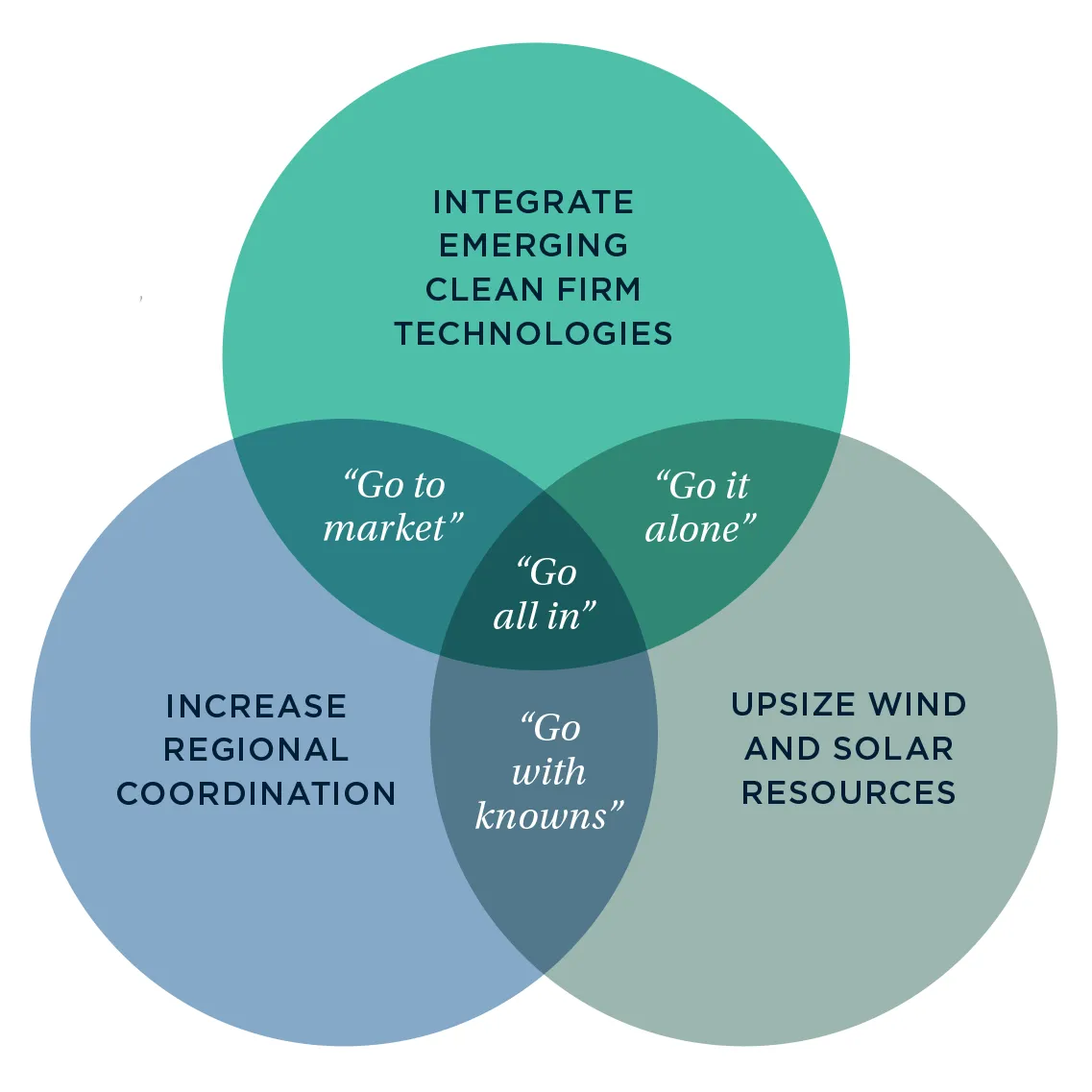
To evaluate these options, we applied two approaches in our analysis, the “practitioner” approach that leveraged more standard utility planning approaches, and a “regionally-coordinated” approach that developed optimal capacity expansion plans for the entire West. The latter could be a viable future if, for example, we had broader markets like a Western RTO or if utilities across the West coordinated over the long term on their resource builds.
Both approaches yielded useful insights. The practitioner method showed that an individual utility could meet its own clean energy and reliability objectives, but doing so would require careful consideration regarding the amount of clean firm resources required. Hydrogen CTs, geothermal, and multi-day storage could collectively yield a 100% clean electricity grid at reasonable costs and while ensuring reliability.
The regionally coordinated approach showed that geographic diversity in wind, solar, and load across the West can significantly help ensure reliability and decrease the total wind and solar needed to achieve a 100% clean electricity system, and without emerging technologies. Today our grid is fragmented, especially in the West, which has 34 balancing authorities. Interregional transmission and regional coordination should be a bedrock for the energy transition.
Finally, oversizing of renewables can help achieve a 100% clean electricity grid. Building additional wind and solar resources in a worst-case scenario could lead to increased curtailment but may still be a lower cost option. Alternatively, this surplus energy could be exported to neighboring systems or used locally for new end uses and flexible loads like hydrogen production, crypto mining, or datacenters.
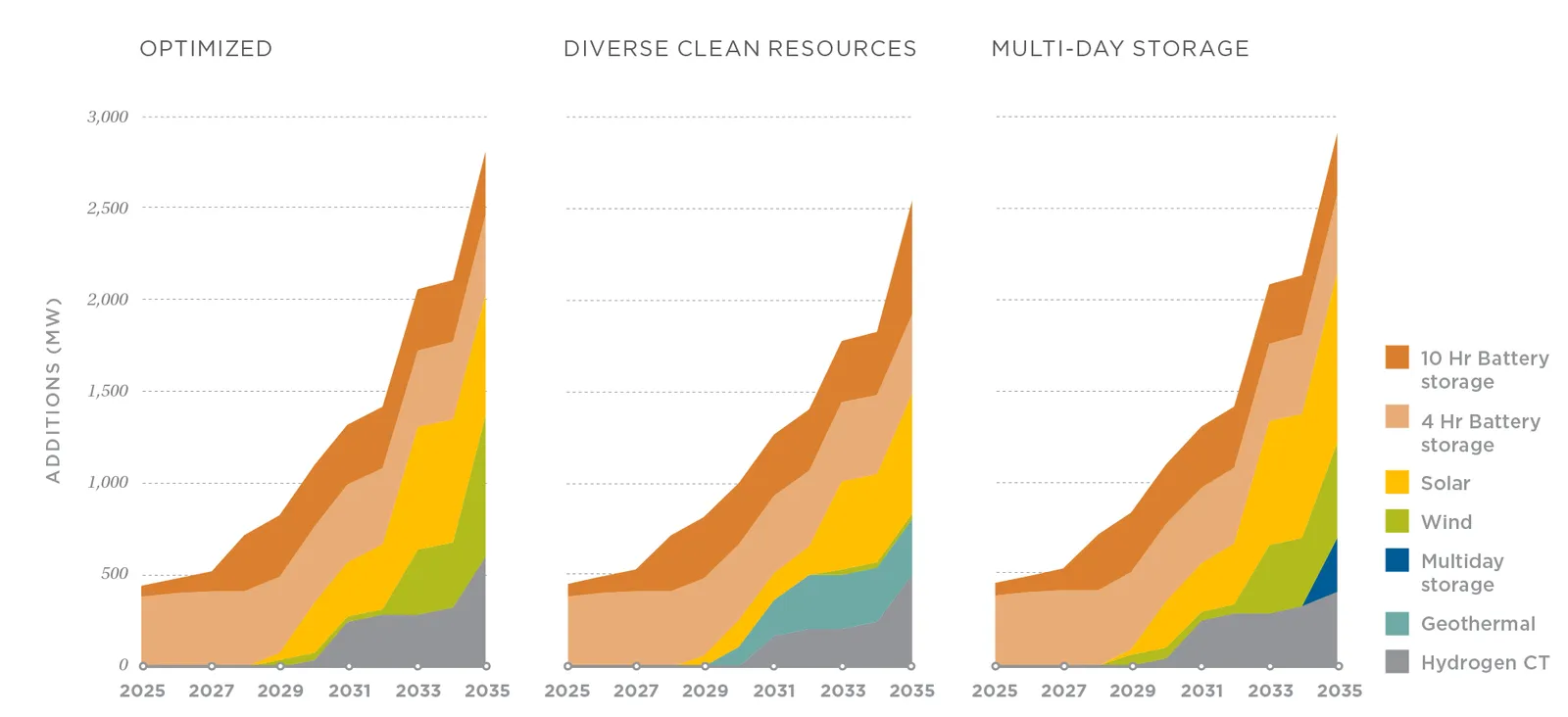
Resource adequacy and reliability remains paramount
Our study found that the nature of resource adequacy risk is shifting in important ways with more variable renewables — which increases the weather dependency of our power system — and more electrified end uses. The risk is moving away from being exclusively summer dominant, to winter and summer dominant, particularly as electrification of electric vehicles and heating demand will increase load in the winter. This will be a new challenge for New Mexico and many parts of the country. Resource adequacy risk will be spread over a broader set of hours.
Resource adequacy needs will no longer arise from capacity constraints but by energy constraints, primarily driven by periods of low renewable output and sustained high load. This has implications for the energy value of last mile resources.
Our analysis showed that coupling capacity expansion modeling with resource adequacy modeling in an iterative, or “roundtrip”, manner can help finetune the last mile resource need. We were able to reduce the quantity of hydrogen capacity by about 40% with this iterative approach, but we learned it is important to characterize this clean firm resource in terms of both the capacity (MW) and energy needs (MWh).
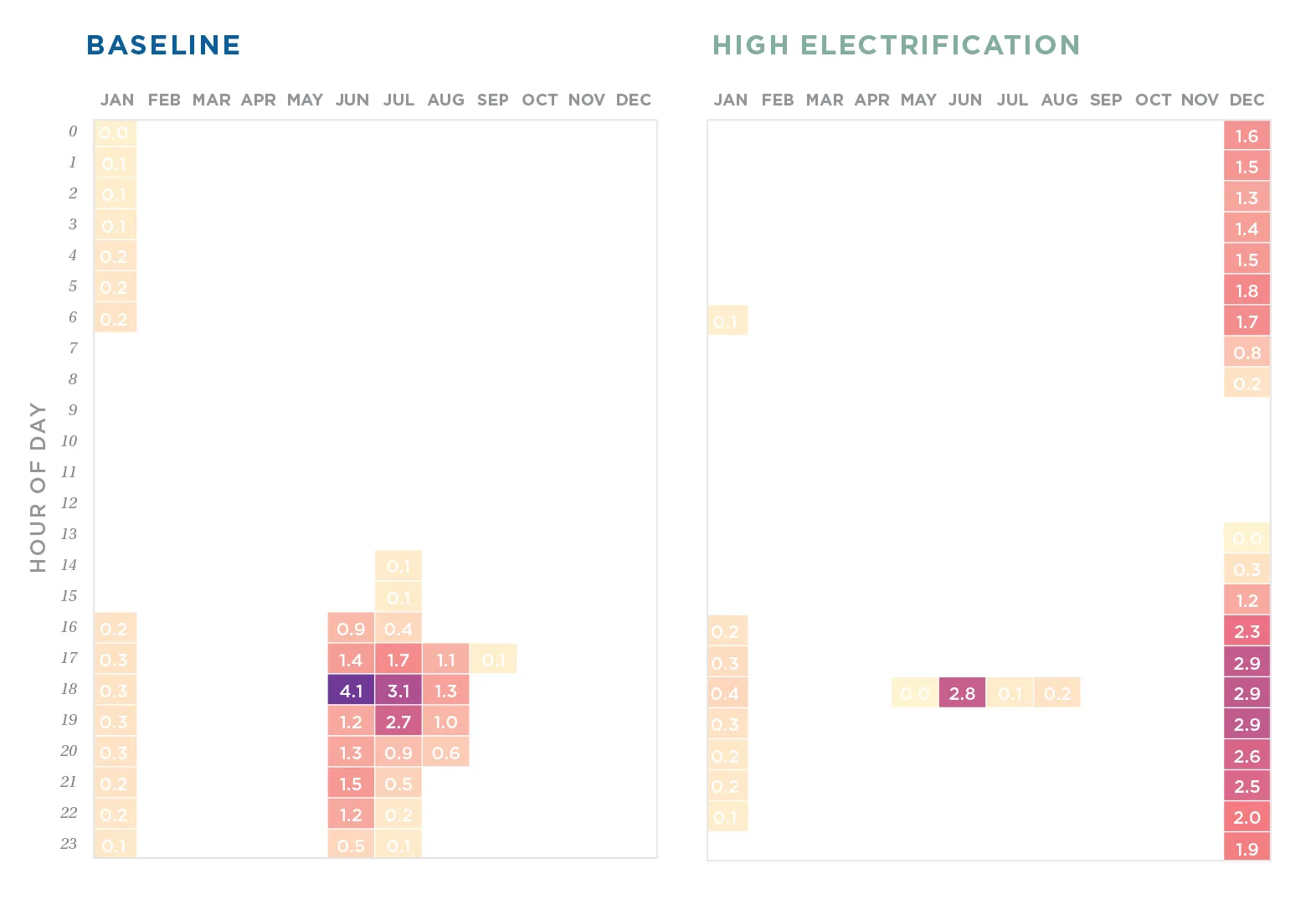
Broad lessons learned for the industry
An obvious question is whether the findings of our study are relevant for utilities other than PNM. The specific findings, such as the optimal quantities of specific resource types, will be different for other utilities and will depend on factors such as expected load growth, electrification, and the quality of renewable resources available. However, to the extent these utilities have similar goals of decarbonizing their power systems, electrifying their building and transportation systems, and are concerned about maintaining reliability through these changes, our findings provide insight into the types of solutions and analysis they might want to pursue.
The benefits of regional coordination have long been recognized and are higher as renewable penetration increases. Some amount of zero carbon firming generation will likely be needed, unless there is access to a broad market and sufficient transmission. The shift to increased winter risk is generally applicable. Before regions become winter peaking, winter reliability risk will increase due to the changing resource mix and electrification. Individual utilities will want to validate these findings for their own systems; however, this and other studies that analyze highly decarbonized power systems are pointing to similar findings in terms of evolving risk and how to mitigate this risk.
Our bottom-line message is that we must stay on track in the near term with undisputed actions that will position us for a future reliable system, recognizing that the specific mix of emerging technologies that will get us through the last mile are uncertain. We must get through the first part of the marathon before we can reach the last mile.


